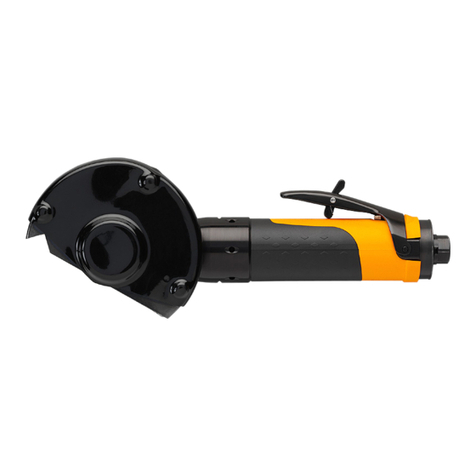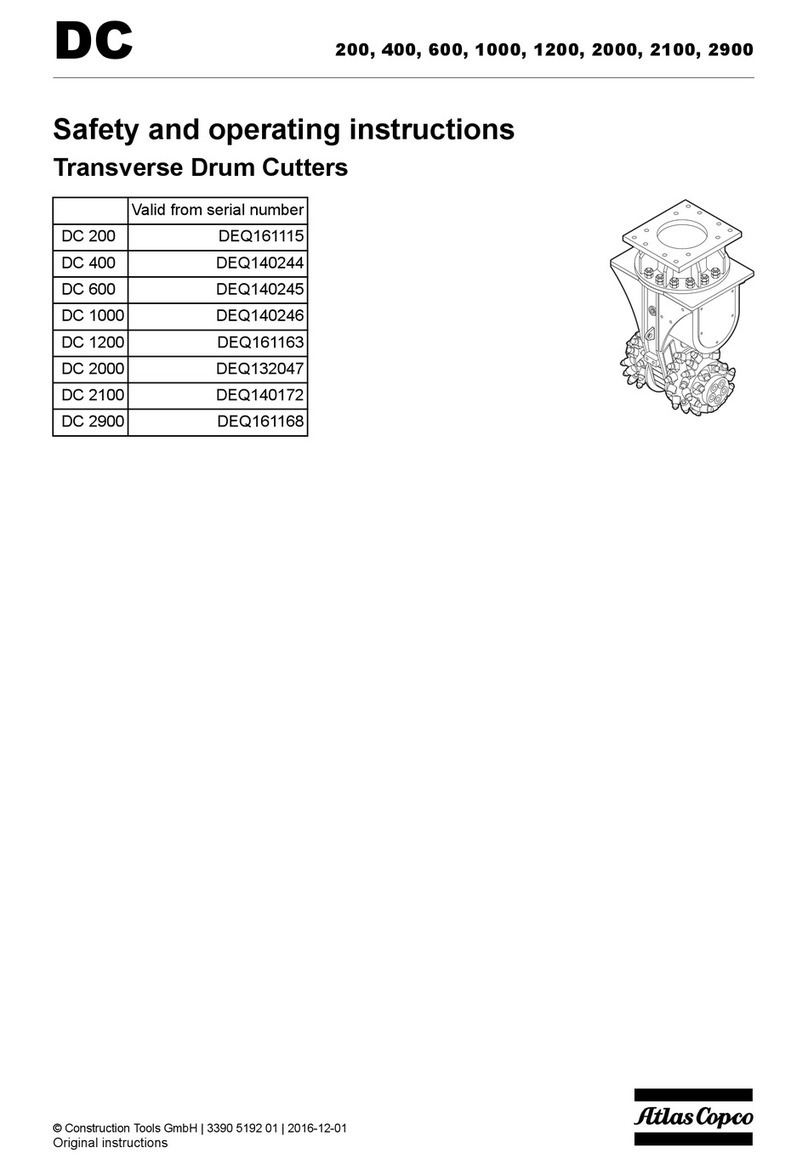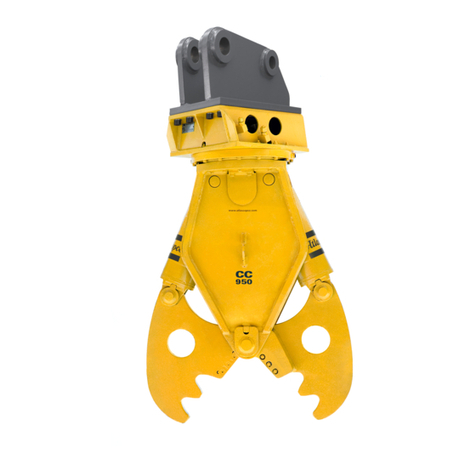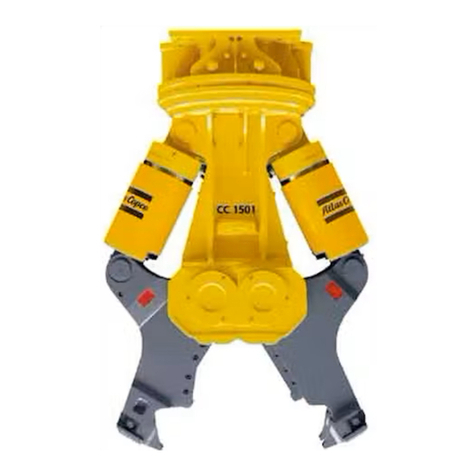
7
Before the first installation:
Beforemounting/dismounting the hydraulic tool
and/or any maintenancework on the hydraulics of
the hydraulic tool/carrier the hydraulic system must
be depressurized!
When using or transporting the carrier withthe
Combi cutter attached, the instructions included in
the operating manual supplied by the carrier
manufacturer must alsobe observed.
Do not run any hydraulic lines through the driver’s
cab sincethey may spring leaks or even burst.
During operations, the hydraulic oil becomes very
hot.
Mounting the Combi cutter:
Mounting the Combi cutter requires the presenceof
an assistant, who must be instructed by the carrier
driver. The carrier driver and assistant should agree
beforehand on clear hand signals.
For transport purposes, useonly the lugs provided
and hoisting equipment of sufficient capacity.
The Combi cutter should only be mounted on an
excavator withsufficient load capacity. The carriers
specified under Section 12., Te chnical specifications
areneeded toinstall the Combi cutter.
Carriers below this weight class will not provide the
required degree of stability and could even fall over
during Combi cutter use, causing injury and damage.
Carriers abovethis weight class may apply
excessively high mechanical loads tothe attachment.
When attaching the adapter useonly the special
steel screws included in supply.
Check the nominal widthof the hydraulic lines on
existing hydraulic systems. It is important that supply
and returnlines for the hydraulic oil areadequately
dimensioned.
Keep your hands away from bores and fitting
surfaces when mounting the Combi cutter, especially
when the carrier boom is moving.
Collect any oil whichruns out and disposeof it in
accordancewiththe applicable statutory provisions
toavoid environmental hazards.
Operating the Combi cutter:
Closethe front screen/splinter guardon the driver’s
cab toprotect the driver from flying rock splinters
during Combi cutter operations.
The Combi cutter should only be operated from the
driver’s cab. Exception: remotecarrier control. See
Section 6.6..
Do not start up the Combi Cutter until bothcarrier
and Combi cutter arein the correct position.
Stop the Combi cutter immediately as soon as
persons arein the danger zone. The danger zone
during the Combi cutter operation is considerably
greater than during the excavation operation − on
account of fractions of stones and pieces of steel
flying around − and for this reason, the danger zone
must, depending on the type of material tobe worked
on, be enlarged correspondingly, or the danger zone
must be secured in asuitable manner through
corresponding measures.
Do not touch any hot parts
The Combi cutter heats up during operation.
Monitor the oil temperature
The temperatureof the hydraulic oil must never
exceed 80 oC. If higher temperatures aremeasured
in the tank, the hydraulic system and/or the
pressure−relief valvehavetobe checked.
Observethe excavator manufacturer’s safety
regulations.
CAUTION:
Withregardtoexcavator operation when working
withan attached Combi cutter, pleaserefer to
Section 6.6..
The Combi cutter is only tobe used for the
applications described.
Dismounting the Combi cutter:
Dismounting the Combi cutter from the carrier
requires the presenceof an additional assistant who
must be instructed by the carrier driver. The carrier
driver and assistant should agree beforehand on
clear hand signals.
When using the excavator or putting it out of
operation, the safety instructions of the excavator
manufacturer must be observed.
Keep your hands away from bores and fitting
surfaces when dismounting the Combi cutter,
especially when the carrier boom is moving.
Collect any oil whichruns out and disposeof it in
accordancewiththe applicable statutory provisions
toavoid environmental hazards.
Securethe Combi cutter after dismounting sothat it
cannot fall over.
































